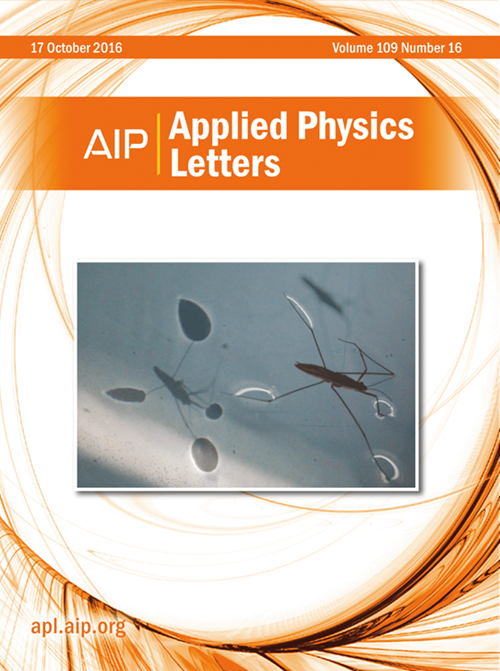利用超薄轻金属间隔物增强三层器件中的自旋轨道力矩
IF 3.5
2区 物理与天体物理
Q2 PHYSICS, APPLIED
引用次数: 0
摘要
本文章由计算机程序翻译,如有差异,请以英文原文为准。
Enhancing spin–orbit torque in tri-layer devices with an ultra-thin light metal spacer
The discovery of spin current generation through an additional ferromagnetic layer has unlocked new possibilities for spin–orbit torque (SOT) devices, particularly in tri-layer SOT configurations. This breakthrough facilitates field-free switching (FFS) with perpendicular magnetic anisotropy (PMA) under the influence of z-polarization. Despite this progress, a significant challenge persists in lowering the switching current density (JSW) in SOT devices, which remains roughly an order of magnitude higher than in spin-transfer torque devices. We incorporated an ultra-thin (1 nm) copper (Cu) spacer into a tri-layer SOT structure where the orange peel effect likely arose. This ultra-thin Cu layer, combined with the optimized Pt-based SO layer, resulted in approximately a 35% reduction in JSW compared to the scenario without Cu insertion. The damping-like torque efficiency was analyzed concerning the FFS performance at optimized Cu spacer thickness to support the finding of JSW reduction. Using magneto-optic Kerr effect measurements and micromagnetic simulations, we identified domain nucleation as the primary mechanism driving FFS, confirming the role of z-polarization in reducing JSW effectively. This study proposes a design that simultaneously addresses three key challenges of PMA, JSW, and FFS in current SOT systems.
求助全文
通过发布文献求助,成功后即可免费获取论文全文。
去求助
来源期刊

Applied Physics Letters
物理-物理:应用
CiteScore
6.40
自引率
10.00%
发文量
1821
审稿时长
1.6 months
期刊介绍:
Applied Physics Letters (APL) features concise, up-to-date reports on significant new findings in applied physics. Emphasizing rapid dissemination of key data and new physical insights, APL offers prompt publication of new experimental and theoretical papers reporting applications of physics phenomena to all branches of science, engineering, and modern technology.
In addition to regular articles, the journal also publishes invited Fast Track, Perspectives, and in-depth Editorials which report on cutting-edge areas in applied physics.
APL Perspectives are forward-looking invited letters which highlight recent developments or discoveries. Emphasis is placed on very recent developments, potentially disruptive technologies, open questions and possible solutions. They also include a mini-roadmap detailing where the community should direct efforts in order for the phenomena to be viable for application and the challenges associated with meeting that performance threshold. Perspectives are characterized by personal viewpoints and opinions of recognized experts in the field.
Fast Track articles are invited original research articles that report results that are particularly novel and important or provide a significant advancement in an emerging field. Because of the urgency and scientific importance of the work, the peer review process is accelerated. If, during the review process, it becomes apparent that the paper does not meet the Fast Track criterion, it is returned to a normal track.
 求助内容:
求助内容: 应助结果提醒方式:
应助结果提醒方式:


